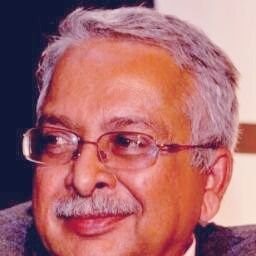It’s all about a keen sense of observation and ingenuity, writes Ramesh Kumar, as he elucidates the fine print
 Logistics Monitor/By Ramesh Kumar
Logistics Monitor/By Ramesh Kumar
History records that on 12 October 1492, Christopher Columbus, the Italian explorer, “discovered” America when his fleet of ships funded by Queen Isabella I and King Ferdinand II set sailing to discover a new sea route to the East Indies. Likewise, Thomas Edison “invented” the incandescent light bulb and phonograph in the 19th century.
What’s the difference between invention and discovery? A discovery is recognising something that already exists for the first time, which none other found before. On the other hand, an invention entails creating something new with one’s ideas and development. Then comes product innovation versus process innovation.
The Automatic Teller Machine (ATM) or Smartphone are apt illustrations of product innovation. Generally, process innovation happens more than product innovation. When one finds a new way of doing something already processed or done, that falls under the process innovation category.
Forty years ago, music directors brought songsters and players of various instruments together under one roof and recorded the entire song in one piece after rigorous rehearsals. That was the process in vogue those days. Recording singers and instrument players separately and the art of mixing them later did not exist then. Today, it does. The Oscar Award-winning Indian music director A R Rahman, like many, records singers separately and mixes background score (BGM) later. Rahman altered the process though the outcome remained the same.
Again, there is ample scope for process innovation in logistics, and third-party players (3PLs) use this route to sign up potential clients. During the client pitching, they offer to study the existing workflow or working process and then provide a solution to improving operational efficiency. But, again, they do nothing original but tweak the existing process and weed out inefficient routines. The Japanese “kaizen” is nothing but the elimination of wasteful or inefficient activities.
In the Hero motorcycle plant at Rudrapur, Uttrakhand, the third-party player noticed that changing the order in which components were “kitted” could reduce or eliminate damage to one particular component. So, they changed the order and improved efficiency.
Similarly, Mahendra Agarwal of ex-Gati in the mid-1980s introduced a category in parcel movement: express delivery. Gati, in Hindi, means “speed”. By introducing a double-driver formula and ensuring the vehicle runs non-stop. At the same time, drivers take turns to keep moving the truck. Agarwal made history through “process innovation”, and one may also call it “product innovation”.
One more “concrete” (no pun intended) example is the popularity of “Concrete Ready Mix”. It was a common sight at construction sites in the past to notice a stationary but rotating vessel oscillating, mixing cement and sand with water for ceilings and floorings. Today, several business enterprises have sprung up, making these mixes on an industrial scale and sent to the construction site on a vehicle. On reaching the site, the vessel portion containing the “ready-mix” is rotated mechanically and discharged swiftly for the same end goal: ceilings and floorings. It is again an apt example of process innovation.
Both types of innovations warrant a keen sense of observation and ingenuity.
- Ramesh Kumar’s previous column, dated October 11, 2021, for The News Porter: ‘How about creating a National Highway Security Force – something on the lines of CISF?’
The author is a business journalist specializing in logistics and supply chain. He has traveled 200,000 km on the Indian highways, met over 100,000 long-haul truck drivers across India since January 2010. He has authored three books: 10,000KM on Indian Highways, Naked Banana! and An Affair With Indian Highways. He is a Life Member of the Chartered Institute of Logistics & Transportation (CILT-India Chapter). He can be reached at konsultramesh@gmail.com. In this column, ‘Logistics Monitor’, he presents a global perspective on logistics and supply chain. The views are the author’s own and The News Porter bears no responsibility for the same.












More Stories
When Rajesh Khanna left the shoot mid-way, told scribe, ‘I’m going for a screw’
Of the Northern Lights and an Adventure with Huskies in Swedish Lapland!
1st April question: Is April Fool’s Day indeed a fool’s day?